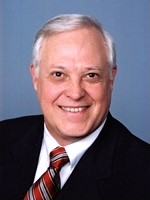Case Study: Owner Carryback Financing
Posted on September 6, 2013 byWith the real estate markets slowing in many areas of the country, we are seeing a resurgence of owner carryback financing. Most of you are aware of the basics of such financing, but you may not have been exposed to some of the more creative approaches.
Let’s look at Jack who wants to move away from day-to-day management of his properties as he is involved in another business venture that is taking more of his time. He could just sell off his properties, pay the taxes and re-invest the proceeds in an investment that doesn’t require the management oversight.
One house Jack purchased some time ago for $100,000 is now worth $150,000. After concessions, realty fee and closing costs, Jack nets $140,000. And after the $80,000 mortgage is paid off, he has $60,000.
But hold on, federal and state taxes have to be paid. Between depreciation recapture and capital gains, taxes total about $12,000. So, Jack is left with $48,000 to invest.
Sally also wants to get out of day-to-day management on a property very similar to Jack’s. Sally has made her wealth in real estate and now wants to travel and enjoy it. At the same time, Sally still considers real estate a great investment that she understands. She knows she can also minimize the tax impact by selling the property on owner financing. Because property sells faster where owner financing is available, Sally decides to sell without a Realtor.
Also, with owner financing the property can be sold at or close to the top market price with few, if any concessions. She may require that the buyer obtain a new first mortgage to replace her mortgage. After closing costs, the sale nets $145,000, giving her a profit of $45,000. But that profit plus her initial $20,000 investment is still in the property. She will receive it over the period she has agreed to finance, say five years.
For her second mortgage, she can easily get 8.9% to 9.9%, if not higher, depending on the interest rate environment. The great part is that she gets to use the installment method of tax treatment, meaning that she only pays the income taxes due on the sale as she receives the money. That means she earns her second mortgage interest rate on ALL the equity left in the property, not just after tax dollars. So, Sally is earning a return on the government’s tax dollars due as well.
If Sally earns 9% on her mortgage investment, Jack will need to earn over 12% just to keep up! Of course, Sally could have used a WRAP around her existing first mortgage to leverage her financing even more while reducing the closing costs of the new loan. This approach could easily increase her yield by 1%-3%. What if she had kept an option on a portion of the property to participate in future appreciation?
